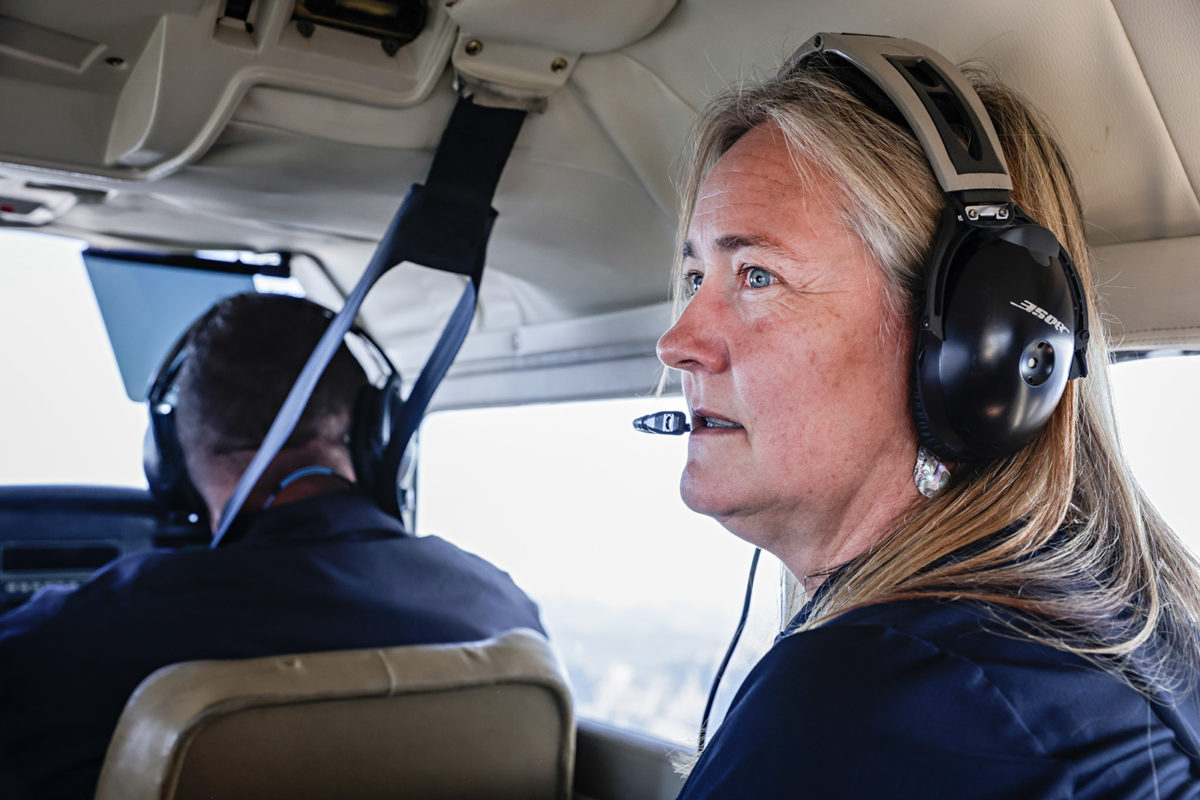Libby Lawmaker Introduces Bill to Weaken Selenium Safeguard on Lake Koocanusa
House Bill 473 would rescind a protective water quality standard for fish species in the Kootenai River basin, which is imperiled by Canadian mining waste
By Tristan Scott
A Republican lawmaker from Libby is seeking to repeal a two-year-old water quality rule to protect fish species in Lake Koocanusa and the Kootenai River, proposing a bill that would nearly double the allowable limit for selenium — criteria set in place to defend against toxic loads of the pollutant leaching into the international waterway from Canadian coal mines upstream.
The lawmaker, Rep. Steve Gunderson, R-Libby, introduced House Bill 473 to members of the House Natural Resources Committee on Feb. 15, describing its intent as straight forward — to strike down a water quality standard crafted after nearly a decade of analysis by a multitude of state, federal and tribal agencies on both sides of the border, where the chemical byproduct continues to be detected at elevated levels in fish tissue and egg ovary samples, as well as in the water column.
“I don’t know how to explain the bill. I mean all you have to do is read it,” said Gunderson, who represents a legislative district encompassing portions of Lake Koocanusa and the Kootenai River, and who says he participated in the development of the new site-specific selenium standard. But Gunderson has fought the rule at every turn, calling the process to adopt it “rushed” even as scientists and government officials whose work spans multiple administrations defend the standard as based on rigorous peer-reviewed scientific models.
Despite those assurances, Gunderson is entrenched in his opposition, often raising immaterial objections that environmental regulators refuted throughout the committee hearing.
“Where is the two headed trout? Nobody has documented any of the supposed damage to the fish,” Gunderson told committee members, who then listened as fisheries scientists described the deleterious effects selenium has on fish species’ ability to reproduce, as well as its role in causing deformities in young fish.
Although Gunderson said he was working on an amendment to the bill, it had yet to materialize when the committee members assembled, and opponents spoke against the measure “as written.”
Chris Dorrington, director of the Montana Department of Environmental Quality (DEQ), said the role of his agency and “the interest of many of the parties you’re hearing from” is to protect the beneficial uses of Lake Koocanusa, which the current protective standard accomplishes. Conversely, he said House Bill 473 would undo nearly a decade of work without any scientific justification.
“Arguments aside of whether there are two-headed fish and all sorts of things that none of us are arguing, the bioaccumulation of selenium affects a fish species’ ability to reproduce,” Dorrington said.
“In order for the state, which has federal primacy to set water quality standards, in order for the state to change a water quality standard for any water body, it must follow science,” Dorrington said. “It must be defensible in the public process, it must include stakeholder input, it must be submitted to the [U.S. Environmental Protection Agency] for consideration, it must be fully vetted by the EPA, and then a standard can be accepted. That is the process by which our current standard was developed. There’s a very clear upstream source of selenium. It’s metallurgic coal mining in Canada. It comes down the Kootenai River and there are years of data representing an increase in the amount of selenium entering Montana.”

Gunderson’s bill received no support during the committee hearing, which was dominated by oppositional testimony from Dorrington, as well as the fisheries administrator of Montana Fish, Wildlife and Parks (FWP), the U.S. Environmental Protection Agency (EPA), the Confederated Salish and Kootenai Tribes (CSKT), the Kootenai Tribes of Idaho (KTOI), the Montana chapter of Trout Unlimited, the Montana Environmental Information Center (MEIC), and the Idaho Conservation League.
But Gunderson is not entirely alone in his rejection of Montana’s selenium standard.
Joining him in the push for a more permissive water quality standard is Teck Resources Limited, the multi-national company responsible for the release of mining contaminants into tributaries of British Columbia’s Elk River, which enters Montana at the U.S.-Canada border before joining Lake Koocanusa and the Kootenai River. Since the rule’s adoption, Teck has mounted an escalating campaign to overturn Montana’s standard on the grounds that it “is more stringent than the comparable federal guideline for selenium.” That’s according to the company’s petition to the Montana Board of Environmental Review (BER), which has adopted Teck’s argument as its central basis for asking the DEQ and the EPA to invalidate the selenium rule, according to a Dec. 9, 2022, letter, which was proposed and drafted by Teck and sent with BER approval.
For its part, DEQ has asked a Montana judge to reject the petition by the BER, a governor-appointed, quasi-judicial board whose efforts to invalidate Montana’s water quality standard for selenium “are based on clear legal error because the Board acted outside its statutory authority … causing injury to DEQ’s administration and enforcement of the Montana Water Quality Act by casting doubt on the validity” of the selenium standard, according to DEQ’s petition for judicial review and declaratory judgment, filed Dec. 27, 2022, in Lewis and Clark County District Court.
Adding complexity to the matter, the BER is the same board that initially adopted the state’s selenium standard in December 2020. Following BER approval, the DEQ forwarded the new water quality rule to the EPA for review. The federal agency approved it on Feb. 25, 2021.
According to the EPA, the federal agency will not begin to consider the BER’s request until it’s notified by the state that the ongoing legal processes have concluded.
In 2016, the EPA developed updated recommended national criteria for selenium at a value of 1.5 micrograms per liter for lakes and reservoirs and 3.1 micrograms per liter for rivers, while also suggesting that states use site-specific standards whenever appropriate and applicable.
In Montana, the DEQ opted to pursue a site-specific standard for Lake Koocanusa and the Kootenai River due to the sensitivity of its fish species and the increased loads of toxic chemicals bearing down on the waterway from Teck’s piles of waste rock in Canada. The state BER approved a site-specific standard, setting the new criteria at 0.8 micrograms of selenium per liter on the lake and maintained 3.1 micrograms per liter on the river.
Against that background, agency officials on Feb. 15 told members of the House Natural Resources Committee they were compelled to defend the standard against Gunderson’s bill, which would invoke the old water-column criteria of 1.5 micrograms per liter on lakes and reservoirs — a standard scientists say is not protective of fish species in Lake Koocanusa.
“I don’t believe this bill is good as written,” Dorrington said of House Bill 473. “First, there has been a nine-year process leading up to the development of the standard, which incorporates the input and the technical capacities of state and federal agencies, local and regional scientists and also multinational representation from both the U.S. and Canada, as well as tribal nations that culminated in … a protective standard of the beneficial uses of this surface waterbody.”

Eileen Ryce, the fisheries division administrator for FWP, said her agency has worked collaboratively with DEQ since 2012 to develop the selenium standard, which she said is based on indisputable scientific evidence.
“Selenium bioaccumulates in the aquatic fish and chronic exposure in fish can cause reproductive issues. This can result in population level declines,” she said, explaining that fisheries biologists have sampled fish egg tissue in Lake Koocanusa as high as 38.8 milligrams per kilogram, far exceeding the 15.1 milligrams per kilogram threshold for reproductive effects to occur. “The reason a fish tissue standard was developed is because young fish are most sensitive to selenium toxicity. Other fish populations can appear fine, they can spawn, eggs will hatch, but when the larval fish feed off their selenium-filled yolks, deformities and mortality can occur if concentrations exceed thresholds.”
According to Genny Hoyle, environmental director for the Kootenai Tribes of Idaho, House Bill 473 does not provide protections for downstream uses in Montana or Idaho, and its adoption would surely face legal action.
“This bill does not take into consideration a decade of science,” Hoyle said. “Montana would also have to demonstrate under the Clean Water Act that it is sending clean water to Idaho via the Kootenai River. You’re risking legal situation by trying to adopt a less protective selenium standard.”
Brad Smith, head of the Idaho Conservation League, said the bill sponsor’s and BER’s apparent collusion with Teck “sets a dangerous precedent.”
“I don’t see why we want to give license to a foreign mining company to pollute our water. It doesn’t benefit Idaho or Montana in any way,” Smith said.
EPA’s Tanya Fish told committee members that the new selenium criteria proposed under House Bill 473 would not be effective under the Clean Water Act until approved by EPA, which requires “robust justification” for such a change.
“To comply with the Clean Water Act, the state would need to provide a site-specific demonstration that a water column criterion of 1.5 micrograms per liter protects the designated beneficial uses in Lake Koocanusa and downstream in the Kootenai River,” Fish said. “In addition, because House Bill 473 would repeal fish tissue elements for both Lake Koocanusa and the Kootenai River, the state would also need to provide technical justification supporting the conclusion that water column criteria alone protects the designated beneficial uses of Lake Koocanusa and the Kootenai River.”

Still, Gunderson said he believes BER is correct in its rejection of the selenium standard. If invalidated at the federal level, he says the standard would revert to its original allowable limit of 1.5 micrograms per liter.
“The process isn’t over yet,” Gunderson said. “Am I holding a coal mining company in Canada in high esteem? No. But they are the first ones to raise their hand and say they are the point source. They spend $1.2 billion in water quality treatment so they are trying to reduce the levels.”
Those assurances provided little comfort to those who have followed the recent news about Teck, which just last week the British Columbia Ministry of Environment fined more than $16 million for polluting waterways in B.C.’s East Kootenay River, including $15.48 million for Teck’s failure to activate its Fording River South water treatment facility near Elkford, B.C., by Dec. 31, 2018, as required by the provincial permit for the discharge of wastewater.
Erin Sexton, a senior research scientist with the University of Montana’s Flathead Lake Biological Station, said her concern about Gunderson’s bill isn’t so much that it seeks to undo years of science-based policymaking — the EPA says Montana’s selenium standard will remain in place until the state can prove through an equally rigorous, scientifically backed process that a weaker standard is necessary. Rather, Sexton says it distracts from efforts to develop an enforcement mechanism for Montana’s standard, which is critical because the Clean Water Act does not provide for enforcement of pollution standards across international boundaries.
“We have set the standard and now we have to enforce it because we have a legacy of mining damages in this watershed,” Sexton said.